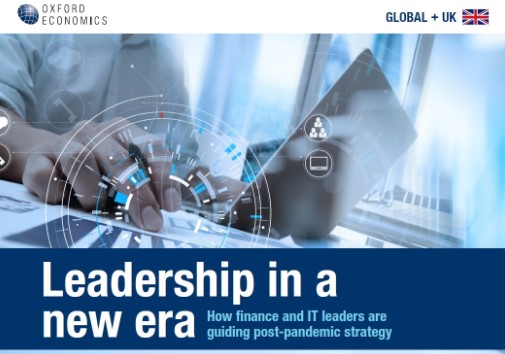How Businesses Thrive When Finance and IT Work Closer Together - Part Two
This is the second of two articles written by Della Hudson, a chartered accountant, business owner, bestselling business author and industry speaker linked to the research from SAP Concur carried out with Oxford Economics.
Read How Businesses Thrive When Finance and IT Work Closer Together - Part One
Uncertainty About the Post-Pandemic World
There will always be a need for better communication to drive better collaboration but one of the current issues raised by the research was the uncertainty that remains for businesses.
There is uncertainty about what the future holds with regard to living with Covid. There is also uncertainty about which of the changes over the last year or so will remain. There is much discussion over whether there is a need to return to the office. And if offices are required should they be used full time or part time or should there be hybrid meetings?
At this point hybrid meetings feel like the worst of both worlds but that is really because most of us aren’t used to them. It was only recently that I spoke at my first hybrid event. At face to face events I would normally try to look at most sections of the audience as I speak whereas I would speak directly into the camera for an online event. I’m still not sure whether I gave enough attention to my offline AND online audiences but I deliberately split my eye contact between them. And the same will be true of hybrid meetings.
Hybrid meetings will require even better chairing to ensure that those online have as much opportunity to express themselves and to ask questions as those in the room. This is another skill that business managers will need to learn.
Other changes were made and technology introduced to enable people to work from home. Some of this will have been introduced quickly with an accelerated decision making and implementation process. Corners may have been cut in order to get something operational as soon as possible. We now need to review those changes to decide:
- Do we still need them?
- Did we implement the best thing in the best way or do we need to change/improve it?
- Is it cost effective to run the new system if most people are back in the office?
Digital Transformation
The pandemic has forced digital transformation on many businesses at a pace that they would not normally have embraced if it was not so essential to keep the business operating by any means possible. I’m shocked by how few businesses have completely digitised some of their finance processes. These are processes that I digitised in my corporate life twenty years ago or in my own, smaller businesses since. There is a lot of inertia and resistance to change whereas I prefer to be bold and to embrace the efficiencies and other benefits of 21st century technology.
Digitising processes can increase the effectiveness of basic tasks while also providing more visibility to business leaders at a time of great uncertainty.
Digitising invoice management increased agility and resilience by 43% according to the research. Business resilience has never been more important and agility allows us to adapt quickly to whatever uncertainties we are faced with and any disasters that may crystallise. Digitising cashflow management led to a 35% increase in collaboration between functions. The lack of collaboration was identified by the researchers as one of the main obstacles to businesses reaching their strategic goals. Digitisation of expense management produced a 42% increase in productivity. At a time when we’re trying to minimise costs this sort of productivity boost is invaluable.
SAP Concur have software that helps all these processes but it is clear that there are other benefits too. The ability to process information remotely or in the office means that it doesn’t matter whether there is a return to the office or not. Invoices and expenses can be recorded in one place and authorised in another without loss of control. The use of this sort of technology means that it is independent of the uncertainty of whether businesses will return to the office, whether staff will be contacted to isolate or whether there will be future waves and lockdowns.
Technology for Decision-makers
Having simple, digital processes provides near to real time information and better visibility into spending. This is the official argument behind HMRC’s Making Tax Digital initiative. Whilst they may be providing the regulatory stick there are plenty of carrots in the real world.
In periods of uncertainty it helps to have up to date information on which to base decisions. This technology needs to be available where the users are so that they will log on and record information immediately. It also needs to be simple and intuitive to use in order to minimise resistance. As simple as taking a photograph or forwarding an email.
But it still needs to be subject to the same stringent review and authorisation as when in the office, even though those roles may be based elsewhere temporarily or permanently. The improvement in efficiency from digitising these processes and the reduction in costs are beneficial but the real value of reliable information for decision-makers should not be underestimated. The more facts available amongst so many unknowns the better the quality of those important strategic decisions.
Having the right software to support your business will provide useful, timely information to decision makers during periods of uncertainly. The Oxford Economics and SAP Concur research explains why this is so important in companies throughout the UK and more globally.
